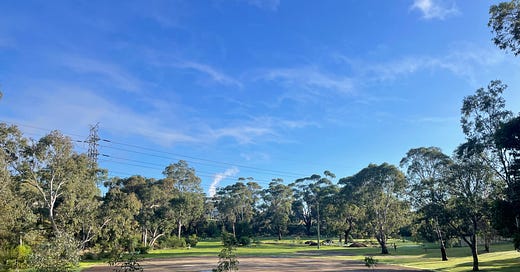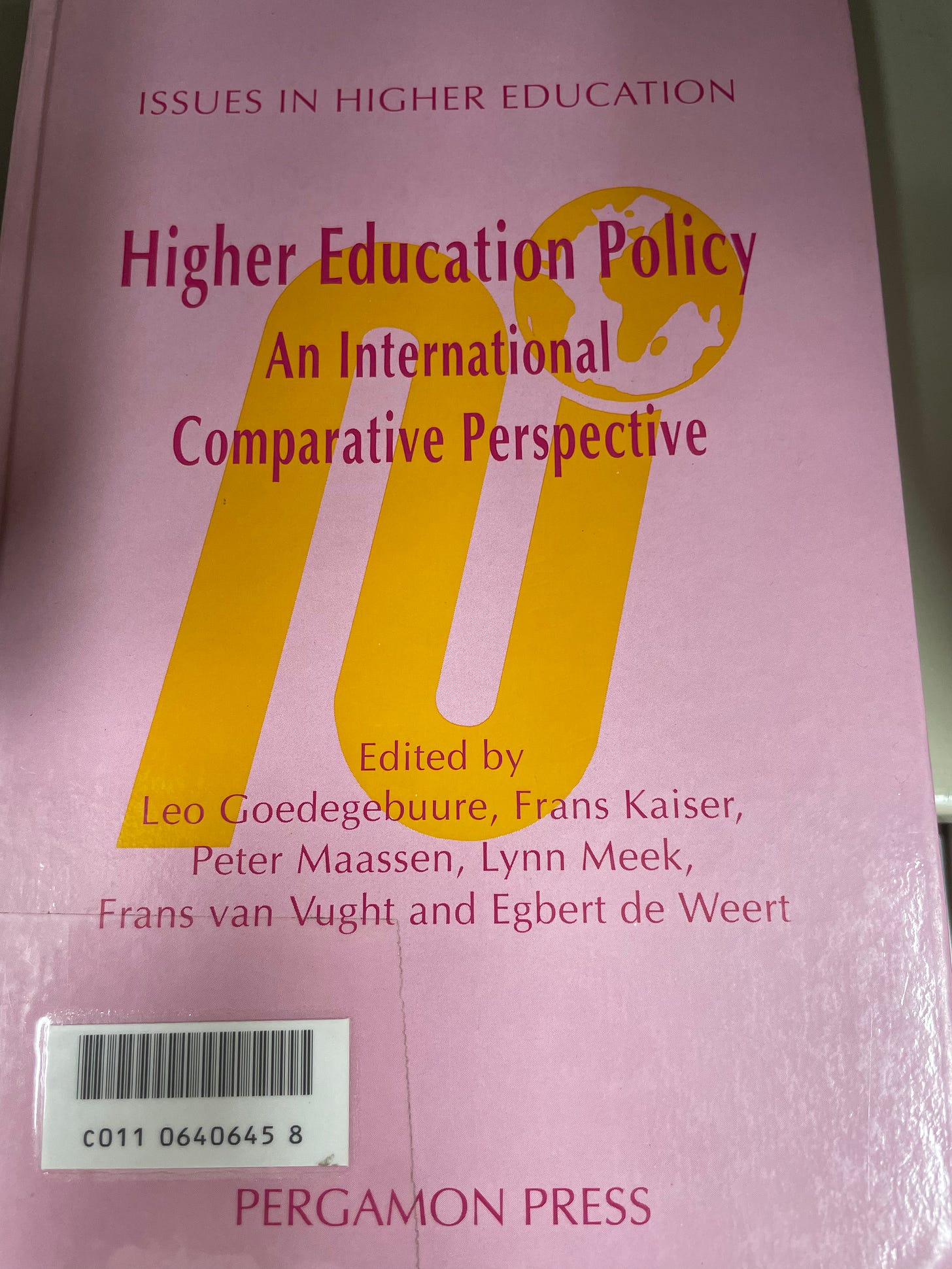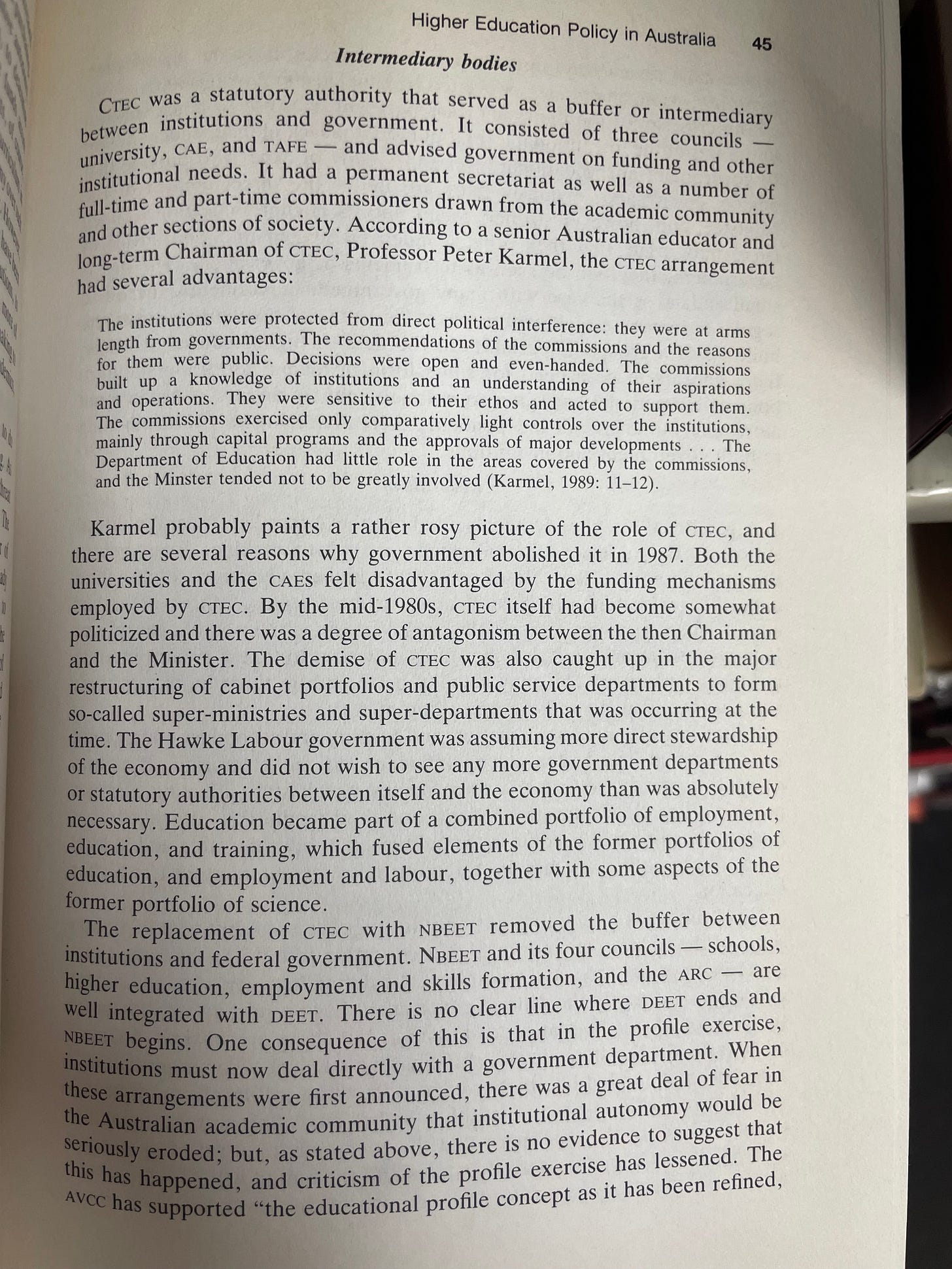Things have been a bit busy of late, like really forking busy. To ease off a little I’ve indulged in two things I love to do. Random trail walks with the dogs, and browsing the shelves of the library. Not simultaneously, but one way or another an old circular concrete slab, 378 triangles, the Accord, the Budget and other contemporary policy developments are all conceptually entwined.
Read on if you are in any way intrigued.
I was taken aback by this weathered circular slab of concrete. It’s in the middle of parklands next to a creek in Melbourne’s Northern suburbs, just outside of what Bernard Salt calls the ‘Goats Cheese Curtain’.
Approximately 50 meters in diameter, I wondered what would necessitate such a thing, and my obsessive tendencies were set loose, much like my dogs.
My first attempt at understanding what the dogs were sniffing was probably much like yours… get online and check an electronic map. No dice. It’s clearly there on satellite images, but is not tagged with any explanatory information.
My second attempt was to look at Melbourne’s go to for cartography - the legendary Melway. Still no dice.
This was clearly an old structure, so thought… maybe an old Melway might shed some light. This is where universities really do more than just produce new knowledge through research, or disseminate knowledge through teaching. They preserve knowledge and culture.
The University of Melbourne’s Melbourne Street Directories collection is an incredible resource and it was here that I found my answer. The 1979 edition (Map 18, ref C6) clearly detailing what would have once been an impressive feat of engineering that disappeared from view in the 1980 edition and thereafter.
The Dewey Decimal Classification
The street directories collection is just one small part of quite a substantial library. Libraries are awesome. I’ve always felt they are a decade ahead of the rest of their university in how they transform themselves to ensure relevance to scholars and learners. Always early adopters of the latest technological opportunities.
Whilst librarians are incredible innovators, their profession is build on strong historical foundations. The Dewey Decimal Classification is still the basis by which you can find books in the library. Publications are organised by ten classes, divided by ten divisions, comprised of ten sections.
Class 300 Social Sciences
Division 370 Education
Section 378 Higher Education
My self indulgent browsing took me to 378, where I found a kindred spirit of a professor doing much the same as myself: hoping to engage with a foundational document. Physically embodied, rather than digitally rendered. One of us was drawn to Newman’s The Idea of a University, the other Collini’s What are Universities For?
What really grabbed my attention however, were reports from The Australian Universities Commission, and Higher Education Policy: An International Comparative Perspective.
It’s worth investing some time in the understanding the arms length intermediary / buffer bodies of the past, and scholarship around their successes and failures. Insight into Commissions past will help in effectively engaging in policy processes that will be catalysed by their reincarnation in the form of the Australian Tertiary Education Commission.
The Australian case study in this book was penned by the incredible Lynn Meek, with his good friend and collaborator Leo Goedegebuure writing a touching recent tribute to Lynn in The Australian Universities Review.
Lynn’s chapter charted policy changes associated with the Dawkins reforms and made good use of Clark Kerr’s Triangle of Coordination. I’ll revisit this triangle and relevance for contemporary developments after returning to that concrete circle.
Our Giant Neighbour
Some readers may have known what they were looking at on first glance of the photo, but it was new to me. The circle of concrete was the foundation for a gas storage holder. Sometimes erroneously known as gasometers. There is a neat overview of gas holders in Melbourne in this Essendon Historical Society Newsletter (p8).
Gas manufactured from coal shipped from Newcastle was piped into gas holders. Giant mechanical structures that rose and fell with the volume of gas contained as supply and localised demand fluctuated. These structures were decommissioned as Bass Strait gas and oil fields enabled a steady supply of pressurised gas piped directly to homes.
Victoria’s reliance on gas will soon subside to be replaced by sustainably generated electricity. The high voltage powerlines visible in the initial photos interconnecting renewable energy generation across the country. New technology will supersede the old, but the remnants of the old will still be visible. Physically as evidenced by my photos, or virtually, as evidenced by old street directories.
Energy transitions have occurred historically, and will occur in future. Those that remain fixated on burning coal and gas as their preferred energy source will disappear from the corridors of power (eventually) and we’ll adopt more sustainable policies and behaviours. Change is inevitable, both for energy, and for higher education.
Higher Education Triangles
Review’s for Burton Clark’s The Higher Education System: Academic Organisation in Cross National-Perspective proclaimed that it would change the field of higher education studies. It is an awesome read and its phrasing and vernacular are imprinted on the way in which I think and talk about higher education. A section of the book includes reference to the triangle of coordination - with various national systems situated within a triangle based on influence and control exerted by one of:
The Market
The State
The Academic Oligarchy
A national systems position within the triangle is not static. Higher education systems evolve. Lynn Meek’s chapter charted the transition away from government control towards market mechanisms as a result of the Dawkins reforms. The demand driven system pushed Australian higher education closer to market control mechanisms. What we see now is a major shift in how Australian higher education will be coordinated, with some relevant examples following.
In probably the only example in which the academy gains greater control, the government has announced an end to ministerial interference in The Australian Research Council. Beyond this, the academy remains subordinate to state and corporate interests. The term ‘academic governance’ for example is not referenced at all in the Accord final report. Most governance related references relate to governing bodies and their responses to things like wage theft and sexual assault and sexual harassment on campus.
The Government has introduced legislation that will give the Commonwealth powers to regulate overseas student enrolments in specific courses. The most market oriented element of the sector, operating in a massive global market will now be subject to more focused Commonwealth coordination. In echos of Australia’s White Australia policy, there appears to be a bi-partisan race towards being tougher on international students through contractionary quotas. These policies may have more profound impacts on university financing and quality than any short to medium term changes emerging from the Accord.
The Government has signalled in the budget the establishment of an intermediary body - ATEC - that would provide advice on a range of matters. One might see this as mechanism of reduced Commonwealth control, but as the budget highlights and signals, ATEC will have a mandate to provide legitimacy to a very interventionist minister. As the single page extract from Meek’s chapter highlights, the shift from Commonwealth Tertiary Education Commission (CTEC) to government direct control was positioned as a transition towards marketisation rather than to more government influence.
Overall the direction of coordination is pointing very strongly towards the State. This is not all bad, with new spending on placement poverty and enabling programs a positive intervention that addresses well documented policy problems. Fears of loss of autonomy surfaced in the late 80s with the demise of CTEC are prominent again with the establishment of ATEC. The direction of control is between market and government rather than any meaningful role for the professoriate.
Full Circle
One text - picked at random from section 378 of the classification system provides one lens into understanding the inevitable change that is coming. Elements of the current higher education system may end up as proverbial concrete circles, destined to be historic artefacts. Some deep historical structures are likely to be retained, normalised as embedded code like Dewey’s decimal classification, endlessly recycled as inputs and outputs of generative artificial intelligence.
One thing is guaranteed, higher education staff concerned with accessibility and quality will be kept very busy for the foreseeable future and I encourage everyone to do the equivalent of taking time out. Walk your dog. Enjoy the treasures in your home and work environments. Most importantly, pay very close attention to your librarians, they are way ahead of you.










Matt,
Thanks for a great read concerning the shift from market to government seen this week. I will have to read Burton Clark’s work. You have captured the seismic nature of the changes proposed in the last week in a very digestible manner.